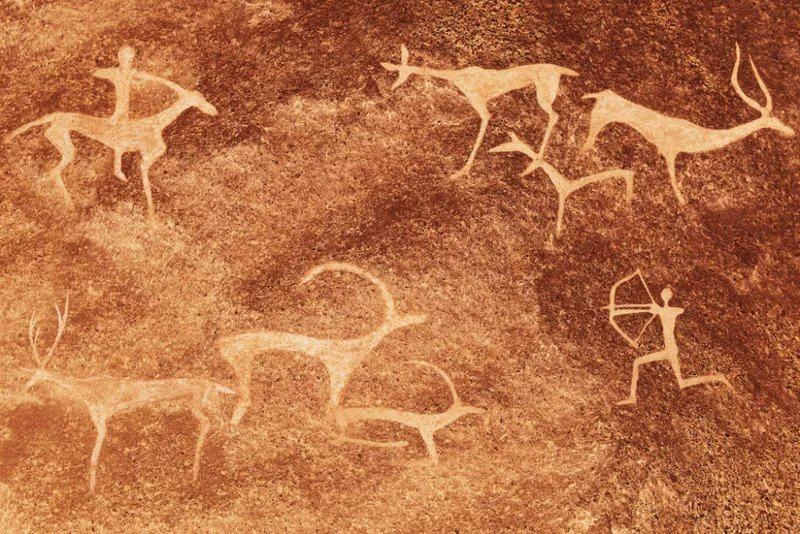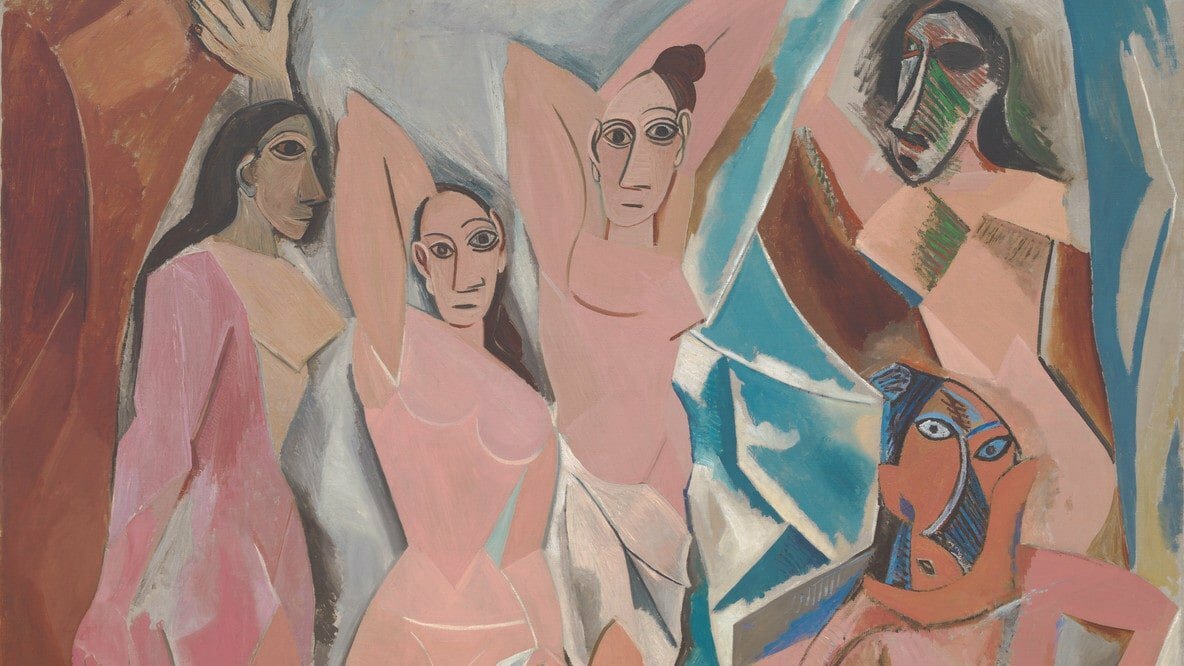Journey to Art History.
Table of contents
• Introduction
• The Beginning of Art
• Ancient Art: Unraveling the Mystery
• The Renaissance and the Revival of Art
• The Exploration of Modern Art Movements
• Contemporary Art: From Avant-Garde to Digital
• Conclusion
Introduction.
"Welcome to the fascinating world of art history, for art enthusiasts and curious minds alike! As we uncover the secrets and beauty engraved in the strokes of artists, let us embark on a journey through various eras. From cave paintings to intricate sculptures filled with captivating stories, we will explore the origins of art. Immerse yourself in the enigmatic symbols and motifs that showcase the artistic talents of our ancestors. Let us travel back to the Renaissance and discover masterpieces created by legendary artists such as Leonardo da Vinci, Michelangelo, and Raphael. The pursuit of classical ideals and realistic depictions propelled art to new heights of creativity and innovation. However, our journey does not end there! We will venture into the dynamic world of contemporary art, from Impressionism to Cubism, Surrealism to Abstract Expressionism. As we delve into these art revolutions, explore groundbreaking techniques and innovative perspectives, hold onto your seat. Lastly, we will dive into the realm of contemporary art, where boundaries are constantly pushed and redefined. Prepare to question your understanding of this ever-evolving world of art. In this artistic odyssey, you will be captivated, enlightened, and perhaps a little bewildered. Whether holding a paintbrush or sitting back and relaxing, let us together discover the enchanting world of art history!"
The beginning of art.

The Beginning of Art - The Amazing World of Cave Paintings and Stick Figures - That's where art began. Let's reminisce. In a time long, long ago, when smartphones were a distant dream and TikTok dances didn't exist, people discovered the magical power of expressing themselves through art. Before words became the primary means of communication, our ancestors relied on art to convey their thoughts, experiences and desires. Expensive brushes or easels were not required. They used their hands as brushes and rock walls as their canvas. These primitive masterpieces were more than just trash. They depicted hunting scenes, animals and sometimes awkward stick figures that seemed like early comics without speech bubbles or jokes. As humanity evolved, so did artistic ability. We transitioned from stick figures to more detailed and elaborate paintings. Ancient civilizations like Egypt and Greece used art as a means to worship their gods and to portray stories from their mythology. The only way to preserve stories was to carve them into huge stone slabs. Art began to permeate every aspect of human life. People began infusing creativity and individuality into everything they created, from pottery to buildings. Building more impressive structures or creating more complex sculptures became a competition. This is the wonderful beginning of art. From cave walls to the great pyramids, art has always been an essential part of human existence. Our ancestors could not have known that their simple paintings and sculptures would pave the way for centuries of artistic expression. But this is only the beginning of the story about art. Let's immerse ourselves in the fascinating world of ancient art and unravel more mysteries. Next stop: Ancient Art - Let's Unravel the Mysteries!
Ancient Art: Unraveling the Mystery
Ancient Art: Welcome to the fascinating world of unraveling the mysteries of ancient art! Prepare to immerse yourself deeply in the fascinating creations and wonders that our ancestors have left behind - from cave paintings to enormous sculptures, ancient art has left an indelible impression on the history of mankind. Let us begin our journey by exploring the earliest forms of artistic expression, dating back thousands of years to prehistoric times when our ancestors began leaving artistic footprints on the walls of caves. These mesmerizing cave paintings depict hunting scenes, rituals, and mystical creatures, offering a glimpse into their way of life. By deciphering the symbols in these ancient artworks, we can gain insight into their beliefs, customs, and daily lives. As we move forward in time, we encounter the magnificent art of ancient Egypt. The pyramids and temples they built are a testament to their advanced architectural skills. The intricate hieroglyphs adorning these structures tell stories of pharaohs, gods, and the afterlife. Each work of art has a symbolic purpose, such as guiding the soul or praising the gods. Continuing onward, we encounter the enigmatic art of ancient Greece. Through their sculpture, they celebrated the human form, capturing emotions, movements, and the essence of their subjects. It is astonishing to think that these statues were once brightly colored. Ancient art also leads us into the mysterious world of Mesopotamia, where clay became an artistic medium. The Sumerians and Babylonians fused faith and art to create captivating sculptures, pottery, and cylinder seals. Each craft provides insight into their rich history and cosmology. Additionally, the astounding art of the Maya draws us into the ancient cities through intricate carvings and breathtaking murals. Each work reveals their advanced astronomy, mythology, and knowledge of the natural world. As our journey through ancient art draws to a close, we cannot help but feel wonder and amazement. These pieces are not simply static displays in museums, but windows to the past that connect us to our ancestors and their creativity. Immerse yourself in the fascinating world of ancient art. Expand your imagination by unraveling the mysteries and stories hidden within these masterpieces.
The Renaissance and Revival of Art.
"The Renaissance and the revival of art. Ah, the Renaissance, a wonderful enlightenment, an astonishing innovation, and a time of complete revival of art. As we immerse ourselves in this captivating art history era, we feel as though we have been magically transported to a time of unprecedented creativity and prosperity. The Renaissance lasted from the 14th to the 17th century and brought about significant changes to the world of art. The dark and gloomy works of the medieval period disappeared, and new understandings of humanism and naturalism emerged. Artists began to approach the world with a new perspective and began to capture the form of human beings and the wonders of nature. One of the central figures of this art revolution was Leonardo da Vinci. He was not just a painter but a James Bond-like figure in the world of art, a genius inventor, a superior musician, and an excellent scientist. His works, such as the famous Mona Lisa, demonstrate not only his technical skill but also his keen eye for detail and ability to capture the essence of his subjects. And then there is the sculptor genius Michelangelo. He knew how to breathe life into stone. His great sculptural works, such as the iconic David, tell the story of his mastery of form and his ability to turn lifeless stone into a living being. But that's not all. During the Renaissance period, artists such as Raphael, Titian, and Botticelli brought a wave of creativity throughout Europe. These artists had their own styles and perspectives, bringing a fresh breeze to the world of art. Let's also talk about art patrons - wealthy aristocrats and families who commissioned these magnificent works. They competed for symbols of power and wealth, and had magnificent palaces adorned with stunning works of art. The Renaissance was a time of cultural exchange, where new ideas and techniques were spread, where artists traveled, learned, cooperated, and pushed the limits of possibilities while learning from each other. As a result, it became an explosion of art that still captivates us today. So, dear readers, before we bid farewell to the Renaissance and its wonderful art, let's remember the wonderful hearts and skills of the amazing artists who shaped this unbelievable era. Next, we will begin our journey into the fascinating world of modern art. Stay tuned for more updates, we promise."
The Pursuit of Modern Art Movements.


The exploration of the modern art movement. Ah, contemporary art. It's a world of strange, bold, and sometimes deeply abstract or opaque forms that can be very meaningful. It's an area that has broken free from the constraints of traditional painting and has entered a completely new realm of creation. Let's jump into the kaleidoscope of artistic revolution! Impressionism - Imagine walking through a warm garden on a sunny day, and the lively play of color, light, and shadow is burned into your memory. Impressionist artists sought only to convey the fleeting essence of the captured moment with their brush. Perfect detail or realistic proportion wasn't necessary. Monet, Renoir, and Degas led this movement, and their works continue to amaze art lovers today. Cubism - Have you ever looked at a painting and wondered why the nose is where the ear should be? Welcome to the fantastic world of Cubism. This movement, inspired by innovative ideas from Pablo Picasso and Georges Braque, challenged traditional depictions of objects. By breaking down forms and rearranging them into geometric shapes, art pushed the boundaries of what it could be. It may require squinting, but that's part of the beauty! Surrealism - If you've ever dreamed of something nonsensical, Surrealists will understand you. This movement, led by Salvador Dali, incorporated the power of the unconscious. Surrealist artists created strange, dream-like scenes, distorting reality and making you question your own sanity. Can you imagine seeing melting clocks or floating elephants? Pop art - Have you ever looked at an ordinary can of soup and thought, "Oh, that's art!"? That's Pop Art. This quirky and provocative style emerged in the 1950s with Andy Warhol and his colorful Campbell soup cans. Pop art celebrates everyday objects and mass media with irony, humor, and satire. So, next time you go to the supermarket, take a minute to recognize your favorite cereal box as a work of art. Abstract Expressionism - If you've ever thought, "I could do that with paint," think again. Abstract Expressionism aims to convey raw emotions and inner struggles through bold and spontaneous brushstrokes. Jackson Pollock and Mark Rothko poured their own emotions onto the canvas, allowing viewers to empathize with their art. It's like therapy, but with a lot more paint drips. Contemporary art challenges traditional ideas and asks us to view the world through a different lens. From the swirling brushstrokes of Impressionism to the confusing shapes of Cubism, each movement has left deep footprints on the artistic landscape. Whether classic or avant-garde, contemporary art offers a feast for the eyes and a journey into the depths of creativity. But wait! In the next chapter of this artistic adventure, we'll dive into the world of contemporary art where digital wizards reign supreme, where thought-provoking performances and installations await, and where art expands the limits that we once thought possible. Exciting, isn't it? Let's meet in the next chapter of this artistic adventure!
Modern Art: From Avant-Garde to Digital.
"Contemporary Art: From Avant-garde to Digital. Art enthusiasts, welcome to the fascinating world of contemporary art! We will embark on a journey to explore the amazing realm of contemporary art expression. Get ready to twist your mind, break the rules, and create chaos in this world. So put on your unconventional hats and let's dive in! Avant-garde: norms."
Conclusion
Art history is fascinating! From the beginning of art to the mysteries of ancient art, the revival of the Renaissance period, and the exploration of the trends in contemporary art, we have come a long way. And in the world of contemporary art, the possibilities from pioneering works to digital are limitless. Immerse yourself in the captivating journey of art history and unleash your imagination. Art should be explored and cherished!
